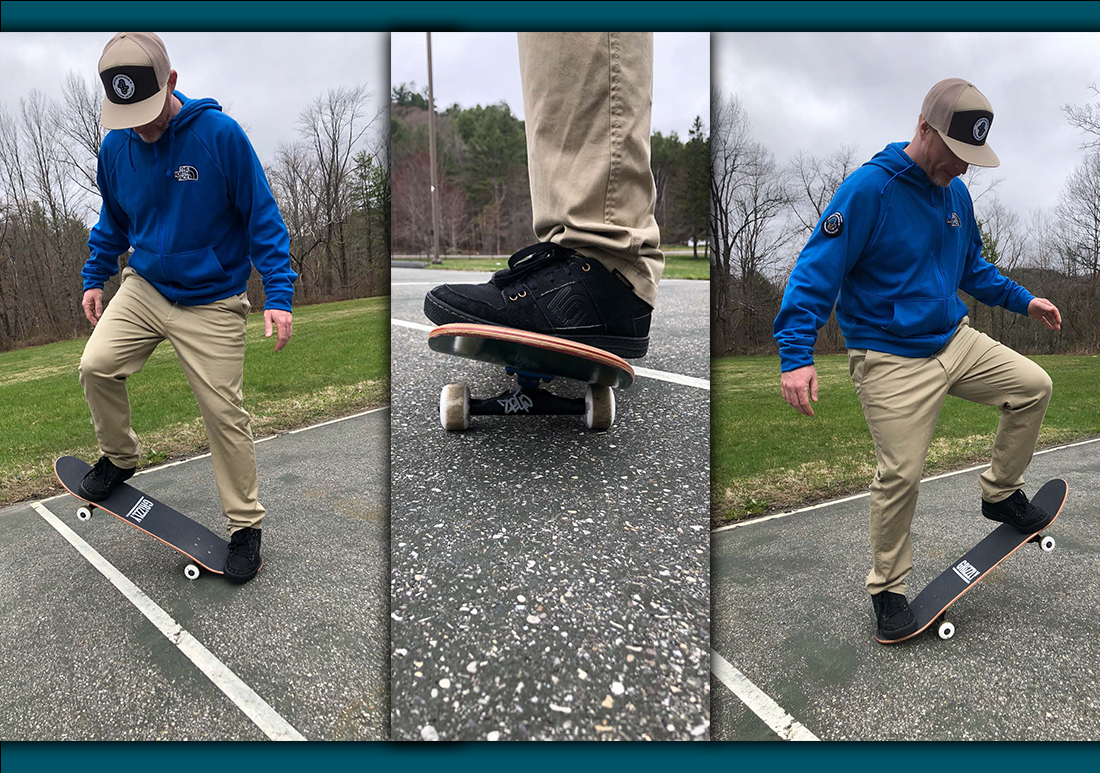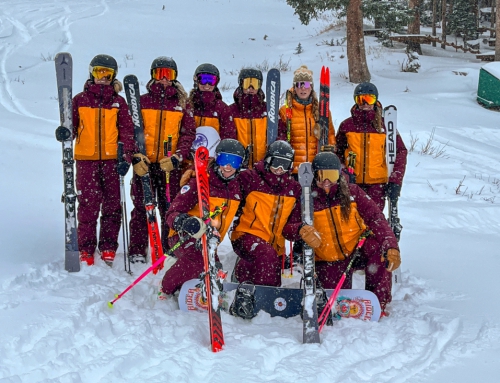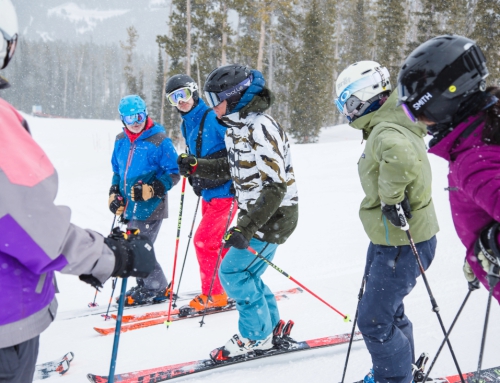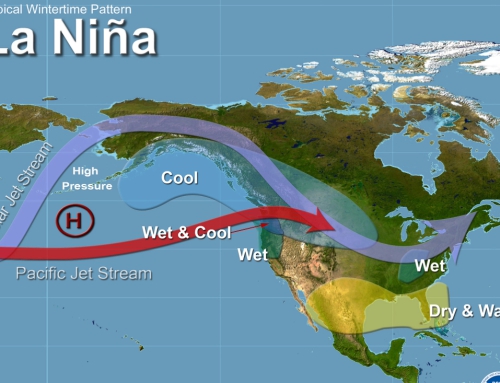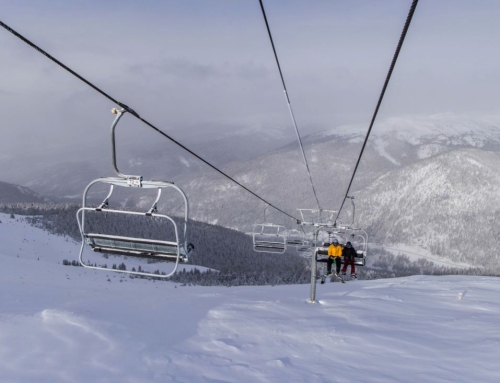32 Degrees: Cement Your Skillsets with Summer Skating
This article by AASI Snowboard Team member Brian Donovan appeared in the Spring 2023 Issue of 32 Degrees. You can read the entire magazine here.
Snowboarding owes so much of its evolution to skateboarding. Our sport exists because skaters (and, okay, surfers) figured out how to take their sideways-standing ways on the pavement to snow-covered mountains. Our stance is inspired by skateboarding, as are our freestyle tricks. It’s only natural that the two sports also share cause-and-effect relationships between the body and the board.
Here’s how to use the snowboarding fundamentals to elevate your skateboarding or longboarding this summer. And, when you get back on snow next winter, you’ll be an even better rider than you are now.
Fundamental #1: Control the relationship of the center of mass to the base of support to direct pressure along the length of the board.
When skateboarding, if you get your center of mass (CM) too far toward the nose or tail, you’ll lose your balance and the board will slide out from under you. Subtle fore and aft movements of the CM have greater impact than on a snowboard. Your movements should still be purposeful – just more for proportional balance from foot to foot and along the length of the board than for managing grip and edge hold on a snowboard.
- Pro Tip: When moving your CM fore/aft, keep your hips directly over one foot or the other. To stay balanced, your hips should not get outside the base of support of your legs (photos 1 and 2).
- Pro Tip: Don’t think about pushing down, extending, or lengthening your legs. Instead, think about independently shortening your legs under your body to keep your CM over the middle of the board and in a balanced position.
Fundamental #2: Control the relationship of the center of mass to the base of support to direct pressure across the width of the board.
This is how you’re going to roll from heel to toe or toe to heel to maintain balance and make subtle adjustments while turning.
- Pro Tip: Think about rolling your feet back and forth – from the balls of your feet toward the heels of your feet and back again (photos 3 and 4). You don’t always need to max out the range of motion from toe to heel or vice versa. Practice rolling halfway across your feet and then reverse course. Work on being able to balance over any specific point of your feet and pause there. Pay attention to how your upper body and CM are moving above your feet.
- Equipment Tip: How the bushings on your trucks are set will either make your board feel tight and harder to turn or loose and easier to carve and turn. Tight bushings and trucks are good for beginners to learn on without feeling wobbly and out of control. Loose bushings make turning easier, but you need to be more active with your body to stay in balance.
Fundamental #3: Regulate the magnitude of pressure created through the board/surface interaction.
To work on balance in motion, practice flexing and extending your legs to move up and down over your board vertically while rolling around. For intermediate riders, as you start to roll around over varied terrain or on transitional features, flexing down and extending up will significantly impact your balance and speed.
- Pro Tip: Extend your legs as you roll through the transition zone on a quarterpipe to accelerate and gain speed and height. Flex your legs vertically toward your board as you roll through the quarterpipe’s transition zone to decrease your speed. This move is like a “kill bounce” on a trampoline that deadens your amplitude, as opposed to the normal leg extension you’d use to increase your bounce and height. The timing, intensity, and duration of these movements impact their effectiveness. A more intense flexion/extension movement amplifies the outcome to increase or decrease the effects of your pumping movements.
Fundamental #4: Control the board’s tilt through a combination of inclination and angulation.
For the best performance and balance while turning, combine inclination and angulation – primarily through movement of your ankles and knees.
- Pro Tip: Inclination will help you to carve your turns. Angulation will help you stay more balanced over the board. Think of the two concepts as volume knobs on your radio. You’ll be using them together by increasing or decreasing them but will be continually adjusting both.
Fundamental #5: Control the board’s pivot through flexion/extension and rotation of the body.
Pivot can come from rotation or counter-rotation of the body. As you gain more comfort and confidence on your board, you can explore pivot in your skating, but for now work to minimize pivot.
- Pro Tip (when pivoting):
- If you plan to use all four wheels to maintain contact with the surface you’re rolling on, I recommend an up-unweighting movement to reduce the friction and allow your wheels to slide and pivot more easily. To accomplish this, rapidly move your CM up as you generate rotational or counter-rotational movements using your shoulders, spine, and hips to pivot the board.
- If you’re pivoting on two wheels, combine either rotation or counter-rotation while simultaneously controlling the relationship of the CM to the base of support to direct pressure along the length of the board. Accomplish this by moving your CM above the two wheels you’ll pivot over – as you generate your pivot through rotation or counter-rotation.
Fundamental #6: Control the twist (torsional flex) of the board through flexion/extension and rotation.
Here, you’re not going to feel the skateboard actively twisting – and you won’t get the same outcome as you do when twisting a snowboard – but you can alternate flexion and extension movements of your ankles to aid balance and adjust turn size and radius. The skateboard’s front and rear trucks can flex at different intensities that mimic the effects of torsionally twisting your snowboard. This movement will closely blend with managing your movements across the width of the board.
- Pro Tip: It’s sometimes helpful to open the ankle joint on one leg while closing the ankle joint on the other leg. This can aid stability and balance while rolling and is a great way to recover when you find yourself slightly out of balance.

